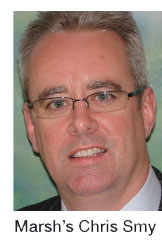 Insurers typically write Pollution on nonadmitted paper, so underwriters can manuscript coverage to a policyholder’s particular needs.
Insurers typically write Pollution on nonadmitted paper, so underwriters can manuscript coverage to a policyholder’s particular needs.
The various policies can cover Mold and Business Interruption, though some insurers add those coverages by endorsement. In addition, some policies are transferable.
“There’s a lot of flexibility built into [policies] that certainly didn’t exist 10 years ago,” says Bruce Kranz, senior vice president of Environmental risk at brokerage Hylant Group.
Recommended For You
Want to continue reading?
Become a Free PropertyCasualty360 Digital Reader
Your access to unlimited PropertyCasualty360 content isn’t changing.
Once you are an ALM digital member, you’ll receive:
- Breaking insurance news and analysis, on-site and via our newsletters and custom alerts
- Weekly Insurance Speak podcast featuring exclusive interviews with industry leaders
- Educational webcasts, white papers, and ebooks from industry thought leaders
- Critical converage of the employee benefits and financial advisory markets on our other ALM sites, BenefitsPRO and ThinkAdvisor
Already have an account? Sign In Now
© 2025 ALM Global, LLC, All Rights Reserved. Request academic re-use from www.copyright.com. All other uses, submit a request to [email protected]. For more information visit Asset & Logo Licensing.








